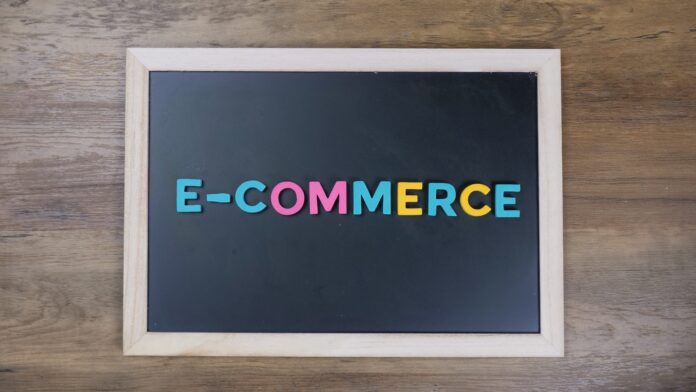Copywriting is an essential element of every successful e-commerce marketing strategy. You may have great content, but if your copy is weak, it will be much harder for you to do business successfully. Hence, here’s how to write great e-commerce copy and increase sales.
#1 Identify Pages That Need Copy
The first thing you should do is identify the pages on your website that need copy. This is important because some pages don’t actually need copy – they only need content. On the other hand, some pages absolutely need copy, including:
Product Pages: Every product you have needs its own page, and that’s where you will need to have product-specific copy. Not only do you need to have product descriptions providing the main information about your products, but you should also have copy that will sell the products to your customers. Most of the time, this type of copy focuses on the unique selling point of a specific product.
Category Pages: While they may seem unimportant, your category pages actually do need to have copy of their own. You can place relevant copy either at the top or at the bottom of your category pages. The goal is to show your customers that they are in the right section of your website for shopping while also encouraging them to go ahead and browse through the catalog to find what they want to purchase.
About Page: You have one page of such kind which is why it is particularly important to nail the copy on it. Here, you need to explain to your audience what your business is about while selling them the idea of your brand. What kind of lifestyle can people lead when using your products? Why would they want this lifestyle? These are the two most important questions you should answer on your About page.
#2 Stay Consistent with Your Tone
One crucial thing to keep in mind while writing all of your copy is that you need to stay consistent with your tone. This tip actually relates both to your content and to your copy – there needs to be consistency throughout the two and your brand voice should correspond to your brand image.
Bradley Regan, an expert from the writing services reviews site Best Writers Online, says, “You need to speak the same language as your audience to truly appeal to your customers. If you are unsure what kind of reading level to use, it’s better to go with the high-school or even middle-school level. This way, even customers with poor linguistic skills can understand all your copy. Another thing to keep in mind is making your copy sound natural. You need to give it some personality and flavor or else it might sound too robotic or corporate.”
#3 Try to Keep It Short and Sweet
Perhaps the best copywriting practice of all is keeping your copy short and sweet. While you can make your content longer when working with certain formats (e.g. long-form articles), this approach won’t work for copy. The nature of copy is such that it is meant to sell your
products to your audience. It is instantaneous and always requires a minimal amount of attention from your audience. That’s why making it longer will work against you.
Of course, the exact length of your copy will vary depending on the space where the copy is placed. For example, you can have several paragraphs of copy on your product pages. However, your category pages will benefit more from a few sentences rather than paragraphs. Moreover, there are also instances when your copy can be just a word or phrase long – these are usually action buttons and ads.
#4 Build Anticipation Gradually
Though you do need to keep your copy on the shorter side, you should also remember about building anticipation gradually instead of jumping to the CTA straight away. You need to lead your customers to the point where you ask them to perform a particular action or where you give them a particularly valuable offer or piece of information. This lead-up needs to be gradual which is why taking it one step at a time is crucial.
Suzan Hutchings, an expert from the custom writing reviews site Writing Judge, explains, “Every time you start writing copy, begin with an intriguing hook. But don’t just drop the most important piece just yet. Once the reader is hooked, start building their anticipation by giving them positive emotions through your wording. Give them small pieces of information one by one. Eventually, you can provide them with that most important piece, whatever it is. Alternatively, you can ask them to do something for you which would be your CTA.”
#5 Use the Right Language
Speaking of language, the way you word your copy also matters a lot. If you use too much negative language, you could be projecting negative emotions to your audience which will drive them away instead of making them want to purchase your products. This is precisely why you need to word your sentences in the most positive way possible. For example, instead of saying “Don’t look for something better,” rather say “You’ve found the best one there is.”
Likewise, you need to stop using adverbs and avoid using too many adjectives. The former makes your writing too convoluted while the latter can quickly become excessive. Use adjectives where needed and try to find the ones that have positive connotations. In addition to that, avoid creating word soup as well as using too many fluff words. Remember that great copy is the one that’s short and sweet, so you should only keep the most essential things and get rid of everything unnecessary.
#6 Focus Less on Products
This might sound counterintuitive but it’s actually a mistake many copywriters make. Your copy needs to sell your products, but if you only focus on selling your products, your copy will sound too salesy. In other words, your readers will feel uneasy because they will feel like you are constantly trying to make them buy from you and nothing else. Obviously, nobody wants to feel like they are only seen as a wallet.
Ronald Atkins, an expert among one of the best writers for the job, puts it this way, “You need to find a balance between selling with your copy and not actually selling. Try to address
the pain points your customers have, their problems, and their worries. Show that you care about these things and that you want to help them. That’s when you can present your products as the solution to their problems.”
#7 Double-Check Your Copy
Last but not least, make sure to double-check your copy before publishing it. Any linguistic mistakes can be a huge issue as they will present you as someone who is either unprofessional or uneducated. In both cases, you will significantly spoil your image as an authority. You can use a tool like Grammarly to check your copy quickly.
In addition to that, check any factual information that you have used in your copy. Perhaps these are certain statistics you presented. In this case, you need to link the sources. Any claims you make need to be backed up.
Final Thoughts
All in all, writing great e-commerce copy does depend on a variety of factors, but if you keep them all in mind, you will be able to strengthen your copywriting strategy. And, of course, use the tips in this article to help you improve your copy and increase sells.
Help keep news FREE for our readers
Supporting your local community newspaper/online news outlet is crucial now more than ever. If you believe in independent journalism, then consider making a valuable contribution by making a one-time or monthly donation. We operate in rural areas where providing unbiased news can be challenging. Read More About Supporting The West Wales Chronicle


























